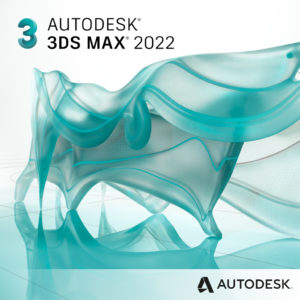What’s New in 3ds Max 2022
By David Spergel | Visualization
3ds Max brings performance enhancements to a slew of modeling tools enabling artists to work faster, boost productivity and focus on being creative. This update includes a faster Smart Extrude experience, improvements to popular modifiers, a new Settings Recovery tool, and more. To learn more about the latest updates, read on.
Accelerated Workflows in 3ds Max
Faster Smart Extrude
From its initial release, Smart Extrude has enabled modelers to rapidly create in 3ds Max using the Editable Poly or Edit Poly modifiers. This update brings significant performance enhancements to Smart Extrude allowing artists to perform Smart Extrude actions to a selection of polygons on their models faster than ever before. Artists can also apply these actions utilizing higher polygon counts than what was previously possible.
Modelers will experience a speed improvement of over 20x when utilizing Smart Extrude to merge or cut into geometries, while also benefitting from further refinements to the final output result through a number of refined restitching operations.
Deformation Modifier Performance Improvements
Performance improvements to modifiers that deform meshes and utilize Explicit Normals in 3ds Max will enable artists to work 2 to 4 times faster when working with modifiers such as Skin, Path Deform, Bend, FFD (all types), Mirror, Noise, Skew, Taper, Twist, Affect Region, Linked Xform, Melt, Skinwrap Patch, Spherify, and Surf Wrap.
Enhanced Smooth Modifier
3ds Max is an important tool for artists to not only create content but also bring that content together for assembly from a variety of sources into final production. To help artists modify/clear explicit normal data from these sources, the Smooth modifier now clears Normal and Smoothing Group data when it is applied to an object (or a component selection). This enhancement to the Smooth modifier makes it easier for artists to apply new data.
Ignore Occluded
A new selection filter called “Ignore Occluded” has been added to the Edit Poly and Editable Poly modifiers in 3ds Max. When enabled, artists will be able to only select the components (vertices, edges, polygons) that are visible in their view. Requested by games and VFX customers, this new filter will improve poly modeling workflows.
Recover Factory Settings
Quickly and easily revert 3ds Max back to the initial startup configuration when corrupted application settings may be causing unexpected UI artifacts or performance issues. The Recover Factory Settings tool will re-initialize the applications settings and recover isolate user-defined scripts and icons without needing to navigate through installation or system folders.
Startup Failure Recovery
Similar to the Recovery Factory Settings feature, 3ds Max will detect and repair corrupt application settings that may cause 3ds Max to fail during a startup sequence. After a failure has been detected, users can optionally choose to recover the initial 3ds Max application settings and migrate their user-defined scripts and icons.
Additional Benefits & Enhancements
Support for Vertex Colors in FBX Imports
Vertex Colors are now supported in FBX imports from a broader set of sources, enabling greater collaboration opportunities across different creative tools with less compromise.
Multi-Threading of Noise Maps
Enhancements to the legacy Noise map provide better performance for procedural material authoring.
INDUSTRIES: Architecture, Buildings, Civil Engineering, Civil Infrastructure, Media & Entertainment








